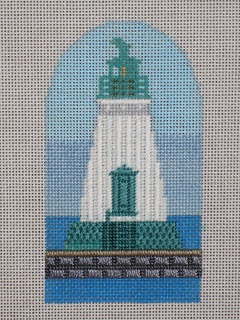 Every now and then, I come up with a slightly off-the-wall idea for a design. On this New Year's Eve, with a blue moon high in the sky, I'm counting down the minutes until midnight with a new clock design!
Every now and then, I come up with a slightly off-the-wall idea for a design. On this New Year's Eve, with a blue moon high in the sky, I'm counting down the minutes until midnight with a new clock design!My inspiration for this design is an actual tall case clock crafted around 1796 by Simon Willard (1753-1848), the premier clockmaker of colonial America. Born in Grafton, Massachusetts, one of four clock-making brothers, Willard was singularly influential in advancing the design of clock movements at a point when wealthy colonists began to clamor for timepieces for their homes.
By the time this clock was made, Willard had moved to Roxbury, Massachusetts, where he set up shop with his brother Aaron. The advertisement for the clock described it as one of a line of "common eight-day clocks with very elegant faces and mahogany cases, priced from 50 to 60 dollars." Little did Simon Willard dream that just over two hundred years later, one of his tall case clocks would sell at auction for more than two million dollars!
The case itself, crafted by an unknown cabinetmaker, is of Hepplewhite design. It boasts of quarter-fan inlays, rope banding, and brass finials above the fretwork on the top. I've situated the clock in a hallway setting typical of the period, complete with dentil crown molding, chair rail and floor molding. Wallpaper above the chair rail and wainscoting below it are also in keeping with interior decoration of the day.
Join me as I explore new territory for 2010!















